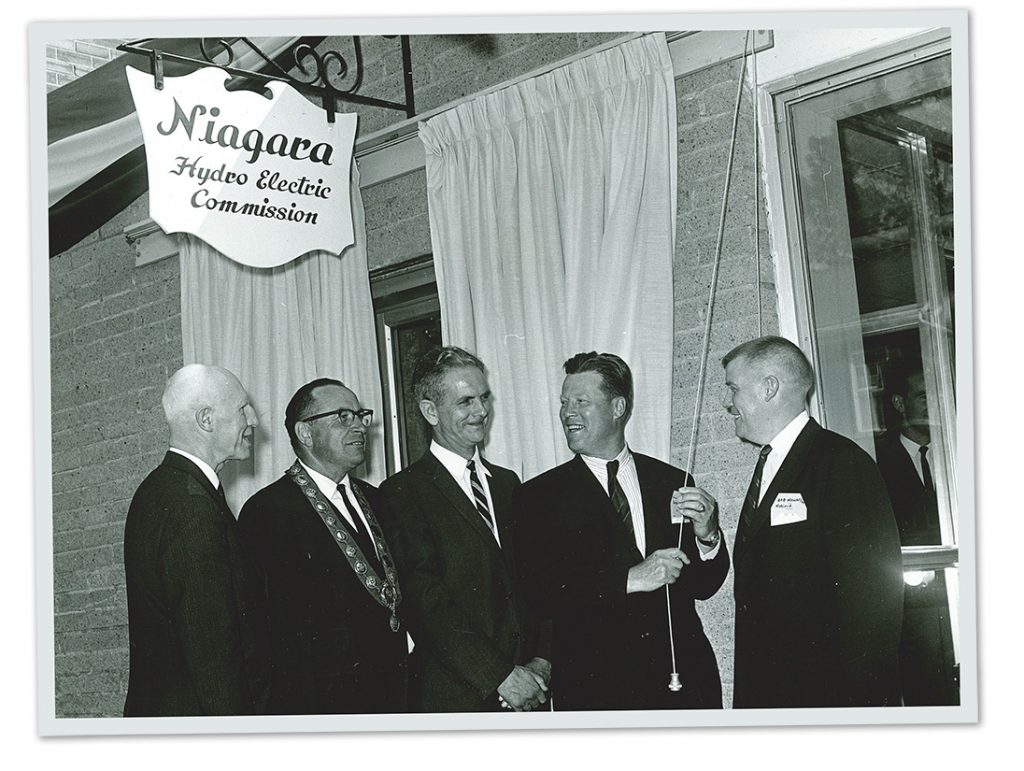Many new residents to Niagara-on-the-Lake are surprised that there is an electric utility solely focused on the Town. While a small town having its own electric utility is somewhat unusual, it is hardly unique. We tend to think of the big utilities such as Hydro Quebec, Hydro One or BC Hydro in Canada or Duke, PG&E, Edison Electric or American Power in the US, when we think of electric utilities. However, across Canada we also have a number of smaller municipal electric utilities such as Summerside Electric in PEI, Hydro Westmount or Hydro Sherbrooke in Quebec, New Westminister Utilities in BC and Lethbridge Electric Utility in Alberta. Across the United States there are over 2,000 electric utilities, most of which serve a single municipality. In Ontario there are over 60 electric utilities with many serving a single municipality. These could be serving the large cities such as Toronto Hydro, Ottawa Hydro or London Hydro or they could be serving smaller municipalities such as Grimsby Power, Welland Hydro, Orangeville Hydro and Wasaga Distribution.

The history of NOTL Hydro goes back to the start of electrification of Ontario. Many municipalities formed their own electric utilities so as to bring this new power to their residents and businesses in an affordable manner. In 1906, the Hydro-Electric Power Commission of Ontario was established to manage the delivery of electricity to municipal electricity distributors. The Niagara Hydro Electric Commission was established in 1912 and a separate utility was established in Queenston. These two utilities later merged as the Niagara Hydro Electric Commission.
In 1974, the Hydro-Electric Power Commission of Ontario was renamed Ontario Hydro. As part of its mandate, Ontario Hydro delivered electricity to all rural areas of Ontario. As municipalities grew, they were allowed to create new municipal electrical utilities or expand existing utilities and purchase the Ontario Hydro infrastructure in their municipality at book value. Due to their higher density, these municipal electrical utilities could deliver the electricity at lower cost than Ontario Hydro. In 1983, the Niagara Hydro Electric Commission purchased the local Ontario Hydro distribution assets so as to serve all Niagara-on-the-Lake.
In the 1950’s, Niagara-on-the-Lake and the rest of southwestern Ontario converted the power from 25 hertz to 60 hertz to align with the rest of North America.
In the late 1980’s, the long-term project to move the infrastructure in some of the urban areas from overhead to underground commenced. This project continues to this day.
In 1998, the Electricity Act was passed by the Ontario Government. As part of this legislation, existing Hydro-Electric Commissions were to be converted to Ontario Business Corporation Act (OBCA) companies. Niagara-on-the-Lake Hydro Inc. (NOTL Hydro) was incorporated on July 1, 2000 and the assets of the Niagara-on-the-Lake Hydro Electric Commission were transferred into NOTL Hydro by way of a Town bylaw.
At that time, there were over 300 local distribution companies (LDCs). With mergers and acquisitions, there are now fewer than 70 LDCs. The NOTL Hydro Board and Town Council looked at some merger and sale opportunities but decided, in part due to a strong public reaction, to keep NOTL Hydro independent.
NOTL Hydro has made significant strides since it was created. Our distribution rates, which were once one of the highest, are now one of the lowest in Ontario. The number of customers is now getting close to 10,000. Our service reliability, which was once a significant issue, has been significantly improved with the purchase and building of the two transformer stations in Niagara-on-the-Lake.
NOTL Hydro will continue to evolve to meet the needs of our customers. There are now over 150 customers with solar power connected to our grid. Customers are starting to purchase electric vehicles and charging stations have been installed in a number of locations. The ever-growing digital world runs on electricity. The impact of climate change is hastening the transition from carbon to clean energy. All these forces will affect the electricity industry for years to come. With NOTL Hydro, the solutions will be developed based on the needs of Niagara-on-the-Lake.